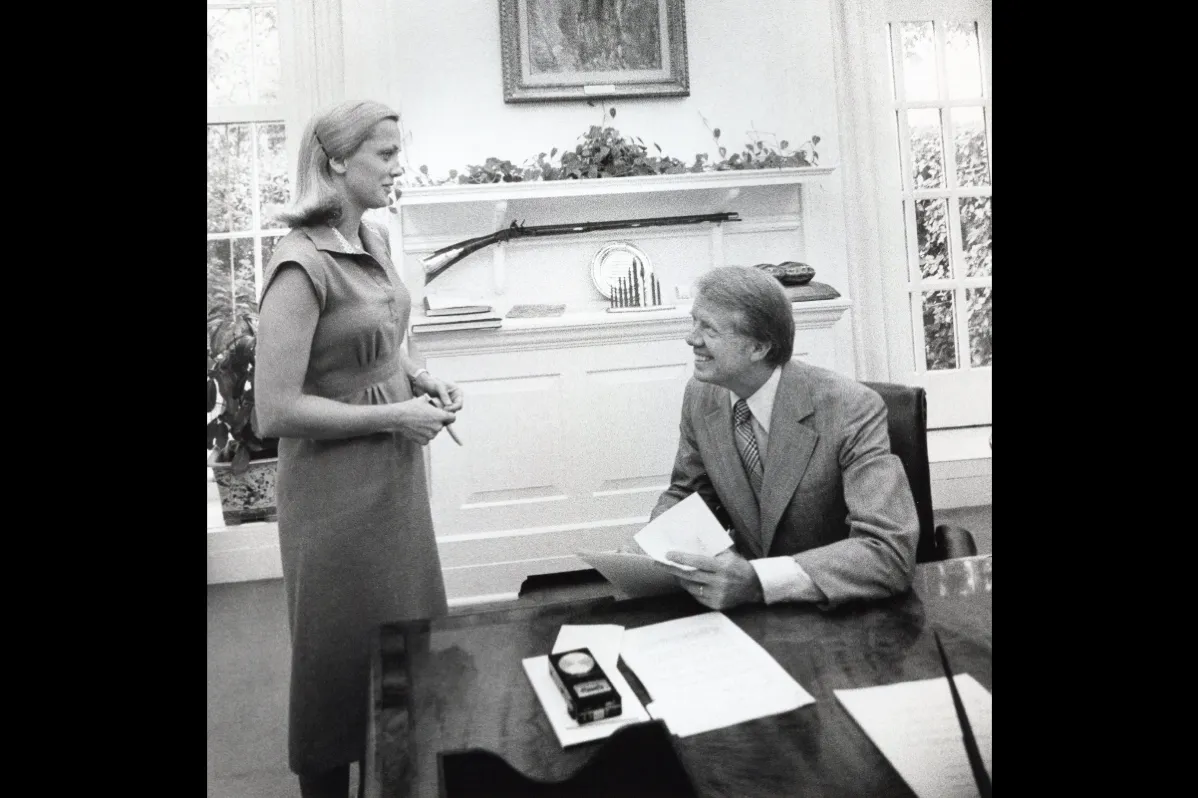The Kentucky Democratic Party reorganization is fast approaching, on the heels of an array of disappointing electoral losses. Again, the question is asked: why do we keep electing Republicans such as Rand Paul and Mitch McConnell to represent us? I can only offer so much insight from my personal perspective, but from my almost five-year tenure in Kentucky Democratic Party leadership, I have noticed several patterns of behavior that will need to be addressed before any progress can be made. From my unique experience as the youngest in leadership, I also hope I can dispel some common misconceptions about the way our state party operates.
How I got here
In 2016, I was a seventeen-year-old girl from Pike County, attending my first Kentucky Democratic Party State Convention. My mother drove us there and stayed around to supervise, as I was still the proud holder of a learner’s permit and could not drive to Louisville alone if I wanted to. I was nervous, but grateful for the experience. I hoped to someday be elected to state party leadership – perhaps once I was through with college.
When my mother suggested that I run for State Central Executive Committee for the public speaking experience alone, I was unsure. But, figuring I had nothing to lose and, at worst, would gain some speaking experience as my mother had said, I cleared my throat and walked to the front of the room to speak.

As it turned out, I didn’t have long to wait for my time in party leadership. Instead of a few years, I only had to wait a few dozen minutes until the votes were counted and my name was called to represent the fifth congressional district as their youth representative. I noticed quickly that the other youth representatives had at least five years on me. My mother was shocked, but proud, and there was a mixed reaction of confusion, laughter, anger, disbelief, and cautious optimism as I introduced myself to the newly formed 2016 State Central Executive Committee. (My mother was even mistaken as the newly-elected member by several people.)
My election to the committee that guides politics in the state demonstrated several vital truths that day:
- Young people are capable of many great things, if given the chance;
- The Democratic Party is friendlier to youth than what most might expect;
- And, less obvious but perhaps most important, the selection process is not secret or rigged.
While I am no longer that seventeen-year-old girl, I am now a twenty-two year old version of her, and still the youngest person in KY Democratic Party leadership. My voice no longer shakes when I speak in committee. I am no longer a stranger introducing myself at events; now I am asked to speak at them. I have a budding “political career” now, and gone are the days of skipping high school classes to go to legislative sessions and “hang out” with the legislators.
People often ask me how I got elected to party leadership and I do what nobody else bothered to do for me: I simply tell them. I went to my precinct convention, then my county, then the state convention. I asked a ton of questions and I didn’t take “no” for an answer. I just kept showing up and pretty soon people learned my name. It was as simple as that. It had all started with tagging along with my grandfather to Pike County Democratic Executive meetings and shyly sitting and listening, but now I was on that committee too as a full member.
Having shared some of my background with Kentucky politics and with the State Central Executive Committee, I now want to name four problems that I think the party must address if we want to turn Kentucky blue.
Problem #1 – Lack of unity, cohesion, and shared purpose
Let me begin by dispelling a myth I often hear: there is a secret cabal of powerful people that control everything. Folks, it’s simply not true. In fact, one of the major problems Kentucky Democrats face is our lack of cohesion and shared purpose. There are too many cooks in the kitchen and no menu to guide them.
I don’t have one simple answer as to how we can settle all of our differences and become the party we should be. Whether it’s over money, power, political correctness, social policy differences, the rural-urban divide, or a history of generational drama, I don’t think it really matters why Kentucky Democrats can’t get along, because the effect is the same: when Democrats won’t work with other Democrats it makes it easier for the Republicans to win. Whether it’s calling out each other publicly on social media instead of in private, running harsh negative ads during a primary, or refusing to work together to accomplish the same goals, it doesn’t matter because it all has the same effect: it just sets back our progress even further. The only way we can stop this from happening is to create a taboo surrounding lack of unity and make it an unacceptable practice.
Another step in achieving better unity is to stop blaming the current leadership for absolutely everything that has gone wrong. Some issues are going to take decades to change, and are completely out of the control of whoever might currently hold the position of power. People should be held reasonably accountable for issues occurring on their watch, sure – but Rome was not built in a day, and neither is the strategy to beat Mitch McConnell or to begin taking back the legislative seats.
We need new people in politics, but we also need to retain the “elders,” as they have valuable wisdom and institutional knowledge necessary to avoid making the same mistakes time after time. The young and old need to learn to respect one another and stop working in opposition. After all, we are all on the same team and each group has insight that the other lacks.
Problem #2 – Expecting “new blood” to solve everything
With each party reorganization, voices join the call for “new blood” to be brought forth to lead the party. It’s as if we are demanding a quadrennial blood sacrifice that would somehow produce the defeat of Mitch McConnell, a chicken in every pot, and the resolution of every institutional problem the party has ever faced.
As four years passes, those new faces experience the same disillusionment we all did when we stood in their shoes. They see that there is no direction, no cohesive message, and more than a full measure of backbiting and greed. Then, when the time comes again, new offerings are brought in, primed and ready for explosive radical change, and the process repeats when change doesn’t come quickly enough.
Here are some problems with this expectation:
- “New blood” is set up for failure from the start, as it is expected to win the game even while just learning the rules.
- “New blood” knows no nuance, and often cuts off its nose to spite its face when the going gets tough, not having witnessed the ups and downs of politics, and not recognizing that change is incremental and must be voter directed.
- “New blood” often disregards time-tested ways of doing things, which leads to sometimes finding a better way, but sometimes repeating the mistakes of others.
- “New blood” quickly becomes the disreputable “establishment” and recedes into rank and file, chanting for more “new blood,” since the last batch didn’t seem to do the trick.
This leaves the party locked in a four-year cycle of frustration. It must realize that its conventional wisdom is wrong, and until it breaks this cycle, it will be stuck in a Sisyphean political purgatory of its own making.
Problem #3 – The drag of national Democratic messaging
When we look at state and local races, the drag of national Democratic messaging cannot be ignored. With the nationalization of media come the effects, making it increasingly difficult to establish a brand independent of a locally unpopular national affiliate.
New England Republicans and Appalachian Democrats face the same peril, as their electoral viability is now tied to the more radical actions of their co-partisans in parts of the country that are not at all culturally similar.
Therefore, it’s totally possible for a state or local party to do absolutely nothing wrong, and still lose. Disappointed Democrats, therefore, need to include this in their assessment of losses. Before they call for heads to roll, they need to seriously consider whether or not actual mismanagement occurred, or whether they were just a casualty of the national tides over which they have little to no power.
Problem #4 – Appalachia vs everyone else
One of the issues that seems so insoluble in Kentucky politics is the Appalachian problem. What lies beyond the “Winchester Wall” (the colloquial term for the imaginary line that separates Eastern Kentucky from the rest of the Commonwealth) seems to many to be a scary foreign territory where people lock their car doors and make jokes while looking nervously around them, saying things like “we should just let West Virginia annex Eastern Kentucky”.
Democratic politicians that dare to venture into the fifth congressional district seldom do so in non-election years, and even when they do their rhetoric is often condescending, drawing a clear line between “us” and “them”, often referring to Eastern Kentuckians as “those people”. You could chalk it up to a misunderstanding of the rich culture that permeates Central Appalachia and reduces it to tired negative stereotypes, but the truth is Eastern Kentucky can blame the land west of the Winchester Wall for a lot of its troubles, and it’s a well-known sentiment shared in Eastern Kentucky.
The coal and gas resources, the working men and women, and the music from the hills is a big part of what made the rest of the state wealthy and successful. It is, therefore, even more insulting when folks in Appalachia are accused of asking for handouts, discriminated against in other parts of the state, and treated like an infestation when we are forced to migrate outside our hills for work and education.
For years, Eastern Kentucky was what kept Kentucky blue, being a stronghold for “Yellow Dog Democrats,” union support, and a steady stream of coal money. And the biggest puzzle of all to outsiders is why Eastern Kentucky votes red nationally and in statewide elections, but many of those Eastern Kentucky counties and towns remain blue locally.
This change from blue to red in Eastern Kentucky is a microcosm of a much larger issue that drove predominantly white middle class and poor Americans to turn to the Republican party for answers. And while the Republican party might be lying about “bringing coal back” and promising jobs, clean water, and a brighter future, at least they are promising something – whereas the Democratic Party only offers silent indignation and lack of engagement.
Kentucky Democrats west of the Winchester Wall must recognize the long, violent history of Eastern Kentuckians struggling against neglect, corruption, and an extraction system that was used to finance the building of the rest of the state at the expense of the homes and lives of Eastern Kentuckians. Democrats must realize that rebuilding trust takes time and enormous amounts of energy. They must also realize that this change has to begin at the local levels and will require patience through years, if not decades.
The strategies, goals, and rhetoric that are used as political gold in the rest of the state are useless in the mountains. It is insulting to us that time and time again, our basic needs such as roads, education, food, jobs, broadband, housing, medical care, and clean drinking water are glossed over in exchange for trendy talking points that do not apply to us. Even the Green New Deal is vague about the change it proposes for its “Just Transition” for Appalachia. Until Appalachians see concrete recommendations and focused policies instead of empty promises, we will continue to doubt the words of those once-a-cycle politicians as they blow through our towns.
Conclusion
There is no single answer, and there is no single leader who can summon the Kentucky Democratic Party into a new era of leadership and prosperity. That type of growth and change requires a new operations model, where Democrats don’t tear down other Democrats, and information flows freely about processes and the mystery is removed. It is going to take a clear Democratic brand that is local to the state, and that is built over time. And, it is going to take an acknowledgement and realization from within of our state’s neglect of Eastern Kentucky, and specific proposals and messaging from Democrats about what they are going to do about it.
This process will take years, probably decades. We can look at other states that turned back the red wave, like Georgia, but in the end we cannot cookie-cutter the work. We will have to build a plan that is unique to Kentucky and to various areas of our state, and then we will have to work that plan over the long term.
Until we as a state party understand these things, learn to walk forward with honest and humility, be willing to truly listen and learn, and talk without empty bullet-points and one-liners, we will remain a red state.
–30–
Comments







